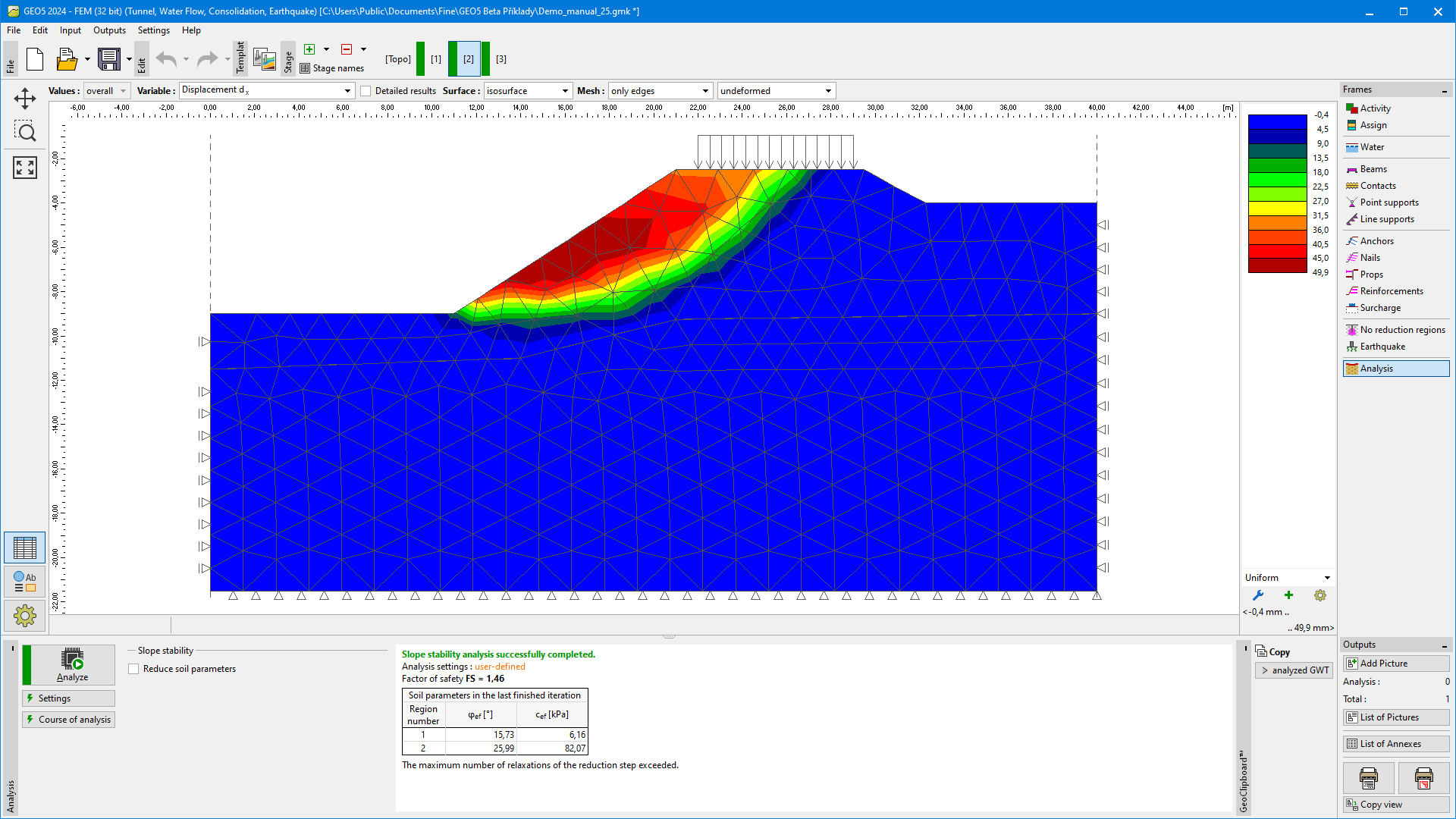Stability
In the stability (safety factor) analysis the program reduces the original strength parameters - the angle of internal friction and cohesion - until failure occurs. The analysis then results in a factor of safety that corresponds to the classical methods of limit equilibrium.
The safety factor analysis requires using six-node elements. Since plastic slip is the main failure mechanism we also require that the Mohr-Coulomb, the modified Mohr-Coulomb, or the Drucker-Prager plasticity model be used for all soils. The default setting can be adjusted in the "Analysis settings" dialog window.
In the stability analysis mode, the only variables available for graphical representation are displacements (in the Z and X-directions) and equivalent total and plastic strains. The deformation of a soil body corresponds to the state of failure attained for the reduced soil parameters - therefore, it does not correspond to the real state of deformation of the soil body. Instead, it provides a good insight about the entire slope response of earth structure in general at the onset of failure.
A suitable way of presenting the stability analysis results are vectors of displacements plotted together with the equivalent plastic strain. The localized plastic deformation provides visible evidence about the possible location of the critical slip surface.
The program allows us to analyze a slope stability according to the theory of limit state or EN1997-1, design approach 3. In the frame we enter partial factor on internal frictionγM,ϕ and partial factor on effective cohesionγM,c, which reduce soil parameters. If we use reduction according to EN 1997 (γM,ϕ = 1,25, γM,c = 1,25), the slope is satisfactory for FS=1,00.
 "Analysis" frame - slope stability analysis
"Analysis" frame - slope stability analysis
 Plot of equivalent plastic strain - slip surface
Plot of equivalent plastic strain - slip surface